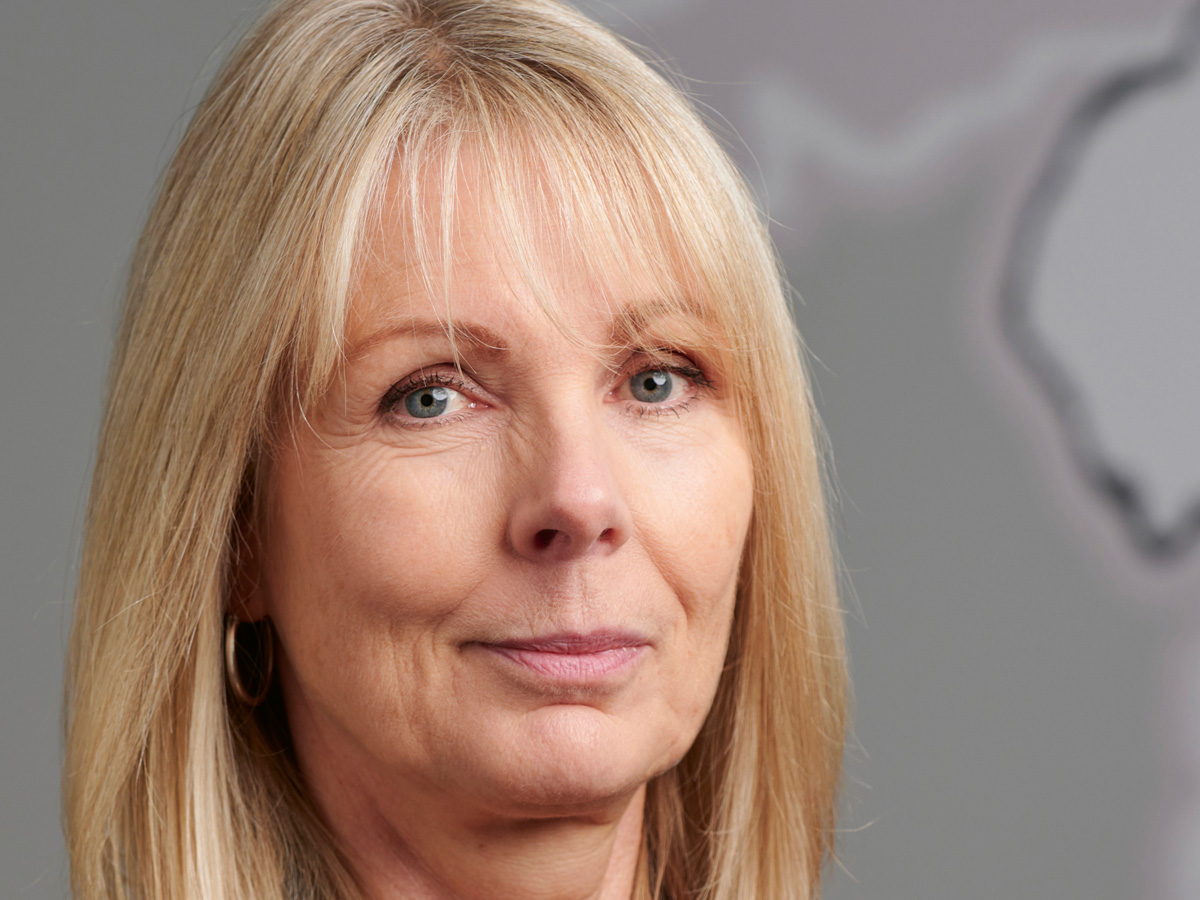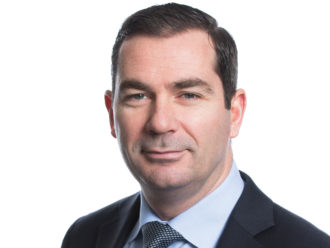How do you embed ESG and responsible investment into Border to Coast’s investment process?
We are a long-term investor and it’s therefore important that we take a holistic approach to understanding all the risks and opportunities a company faces when we are making investment decisions. Our portfolio managers incorporate material environmental, social and governance (ESG) issues into their investment decisions in the same way they think about valuation, management quality, competitive advantage and profitability.
This starts with the research we conduct, whether it’s for listed equities, fixed income or private markets. ESG is factored into that initial process through detailed stock and issuer research and private markets due diligence.
It’s also a central component of our external asset manager procurement and appointment process. We monitor managers quarterly and conduct an annual deep dive on how they include responsible investment in their process.
What is your approach to investing in innovative climate change technologies?
We recognise that more investment is needed in infrastructure and technology to facilitate the transition to a low-carbon economy. Engagement alone will not result in real world change. We are also looking for good investment opportunities.
That’s why we have committed to increasing our investment in climate solutions with the support of our partner funds through their asset allocation decisions. We are facilitating this through our private markets programme, which through the infrastructure offering includes an energy transition theme.
In 2022, we also launched a dedicated Climate Opportunities offering targeting investments that will have a material positive impact on climate change and support long-term net-zero carbon emission goals.
You have an ambitious net-zero plan. How is that going?
We have always factored climate risk into our investment analysis and have continued to evolve this process. Border to Coast has worked across the investment team to understand the climate risks and opportunities in our portfolios and conduct enhanced risk assessments for the largest emitters using a range of tools and data.
We have communicated our net-zero targets to our external managers and are working with them to implement those into the portfolios they manage. Stewardship, and working with companies to have viable transition plans, is critical to reaching net zero and so is a central component of our Net Zero Implementation Plan.
The low carbon transition is already one of our four priority engagement themes and we have developed our stewardship approach to support the ambitious targets we have for financed emissions under engagement.
Our voting policy has been strengthened again on climate change with a focus on the oil and gas and banking sectors. We have pre-declared our voting intentions ahead of some key meetings.
As part of our net-zero goal, we have set short and medium-term emission reduction targets covering our in-scope assets. We monitor our metrics on a quarterly basis and report annually through our climate change report. We have already made big cuts since 2019 and are con dent of meeting our 2025 and 2030 targets.
What are the biggest challenges within that plan?
It’s important that we look at forward-looking metrics where possible and not just focus on carbon metrics and foot-printing. Carbon data can be out of date and doesn’t reflect the transition plans companies have in place.
We use tools available such as the Transition Pathway Initiative tool, the Climate Action 100+ net zero company benchmark indicators along with other data metrics to assess where companies have made commitments to being net zero.
We need all sectors of the economy to make and enable the transition. Rather than excluding entire sectors we need to assess where companies have credible plans. Otherwise, there’s a risk that we could end up restricting the investment universe unnecessarily and have concentrated portfolios with the associated investment risk that brings.
Data is still a challenge, especially for more esoteric asset classes. Coverage for fixed income portfolios is improving and we are engaging with external managers to improve our coverage. It is still challenging to get data for some multi-asset credit areas and private markets.
We are supporting initiatives such as the ESG Data Convergence Initiative for private markets, and the Assessing Sovereign Climate-Related Opportunities and Risks (ASCOR) project for sovereign bonds to try and correct this.
You also have a big focus on stewardship. How does that t into your commitment to ESG?
We believe in engagement as a tool to influence change in company behaviours. As mentioned, stewardship and engaging with our investee companies is crucial for us to meet our net-zero goal. We have four priority engagement themes: low carbon transition being one, with others focused on diversity, labour, waste and water.
We have increased the size of the responsible investment team during the past year and now have a stewardship specialist supporting our approach. We also have an external engagement provider engaging on a broader range of ESG topics.
It’s important that stewardship – voting and engagement – is incorporated into investment decision making and isn’t something that’s siloed. That’s why our portfolio managers are involved in voting decisions and engagement meetings.
You have alluded to it, but data is often cited as a big problem within ESG. How can this be addressed?
Data is a challenge. There is a lack of standardisation leading to quality and credibility issues. Coverage can vary significantly across different markets, especially in emerging markets, and methodologies also vary between data providers.
Arguably data is still an issue for carbon and monitoring climate risk, but this is an even bigger challenge when looking at nature-related data and future disclosures for the Taskforce on Nature-related Financial Disclosures.
Having a standardised approach is critically important, this is hopefully being addressed through having a global baseline for sustainability disclosures, which should improve the quality of disclosures and decision-useful information for investors.
Will investors using engagement to change company attitudes to ESG move the dial on climate change issues?
As long-term investors, we have chosen to use the strength of our collective voice to influence companies to drive change in the companies we invest in. We believe the most effective mechanism is through active engagement.
We do this directly and through our membership of initiatives and investor groups, such as Climate Action 100+ and the Local Authority Pension Fund Forum (LAPFF). This is to push businesses to take real steps, whether that’s reducing emissions and setting reduction targets or addressing social aspects, such as modern slavery.
We believe engagement secures lasting, positive changes that will make a real contribution to achieving the low-carbon transition the world needs. We have seen positive outcomes with companies making net-zero commitments and improving disclosures.
However, this year we have seen some companies backsliding on previous commitments, so it’s important that as an investor we continue to hold those companies to account and have those challenging conversations.
We also use the power of our collective voice to engage with and influence regulators, policymakers and the wider industry to put the measures in place required to have a real-world effect.
In what circumstances do you consider divestment? And how often have you used it?
Our belief in engagement does not mean that we will hold companies that are under engagement indefinitely. We have an engagement escalation strategy, which forms part of our responsible investment policy. If companies are not responding we may need to escalate our approach.
We will do this through a number of channels including voting and ling shareholder resolutions; divestment in individual companies is an important part of this engagement toolkit. Whether a company is responding to investor engagement or not also forms part of our investment decision-making.
For example, climate change issues were part of the decision to sell our position in a range of companies, such as Exxon and Korean utility KEPCO.
What did you make of the last COP? And what do you hope for from the next one?
COP27, in the vast majority of areas, failed to live up to its billing of the ‘Implementation COP’. There were some positive developments including the agreement of a formal work programme on a just transition and the establishment of a loss and damage fund. However, there remains a distinct lack of agreement on how plans should be put into action.
The main issue as an investor is that slow progress means the risk of not meeting that key 1.5-degree target by 2050 increases, and so we will continue to engage as an active steward and responsible investor to manage and mitigate that risk over the long term.
Do we expect more from COP28? It is difficult to say. As responsible investors, our fiduciary duty is to ensure that we identify the risks and opportunities of climate change and act in the best interest of all our stakeholders – and the planet.
The risks are well identified.
However, with regards to the opportunities, we hope for more decisive action in the area of climate finance to scale up mobilisation of private capital in low-carbon mitigation and adaptation projects, across all sectors, vital for the rapid transition to a low-carbon economy.
Our dedicated £1.35bn Climate Opportunities offering is an example of Border to Coast’s commitment to facilitating increased investment in climate transition solutions. This is invested over a three-year period targeting investments that will have a positive impact on climate change and support long-term net zero carbon emission goals. It includes investments across private equity, infrastructure and private credit.
The BridgeTown initiative from COP27 – which set out to address immediate financial needs while also starting to address systemic issues requiring transformation of the financial system – was a positive start. We will be watching to see how this proposal is further developed.
Hosting the conference in another influential petro-state could be seen as problematic in formalising an agreement, but it is hoped that commitment to a global stocktake of the Paris agreement may help focus minds.
What is next for Border to Coast on ESG?
We will continue to progress our three-year responsible investment strategy, which is made up of four pillars: ESG integration, active ownership, industry engagement as well as reporting and governance.
This is our second year in the three-year strategy and was developed to ensure we can support our partner funds, who are, of course, local government pensions funds, in delivering against their stewardship responsibilities in line with regulations.
As active stewards and our focus as long-term investors, we will continue to work to make a difference with the collective voice that pooling brings.





Comments